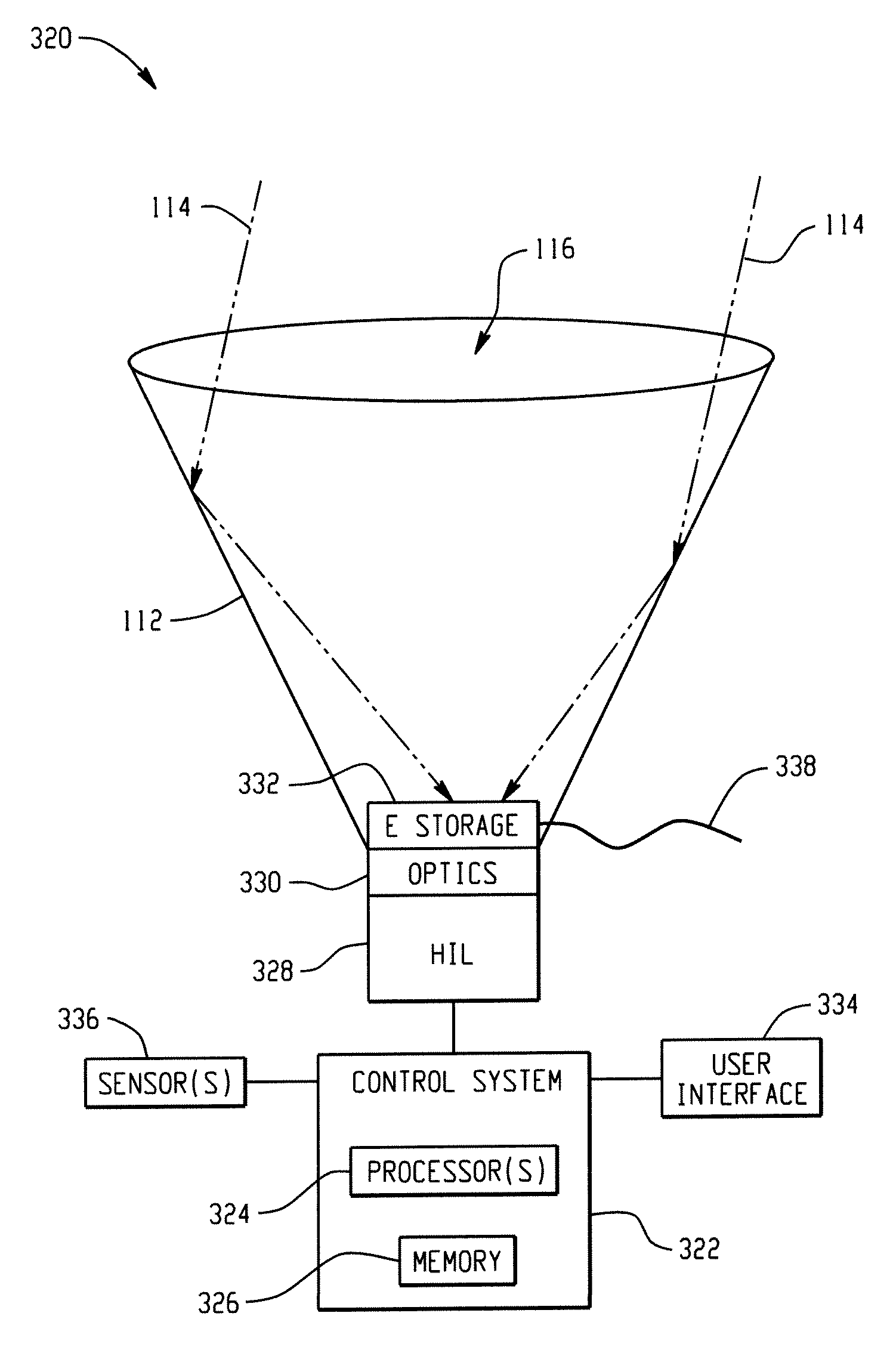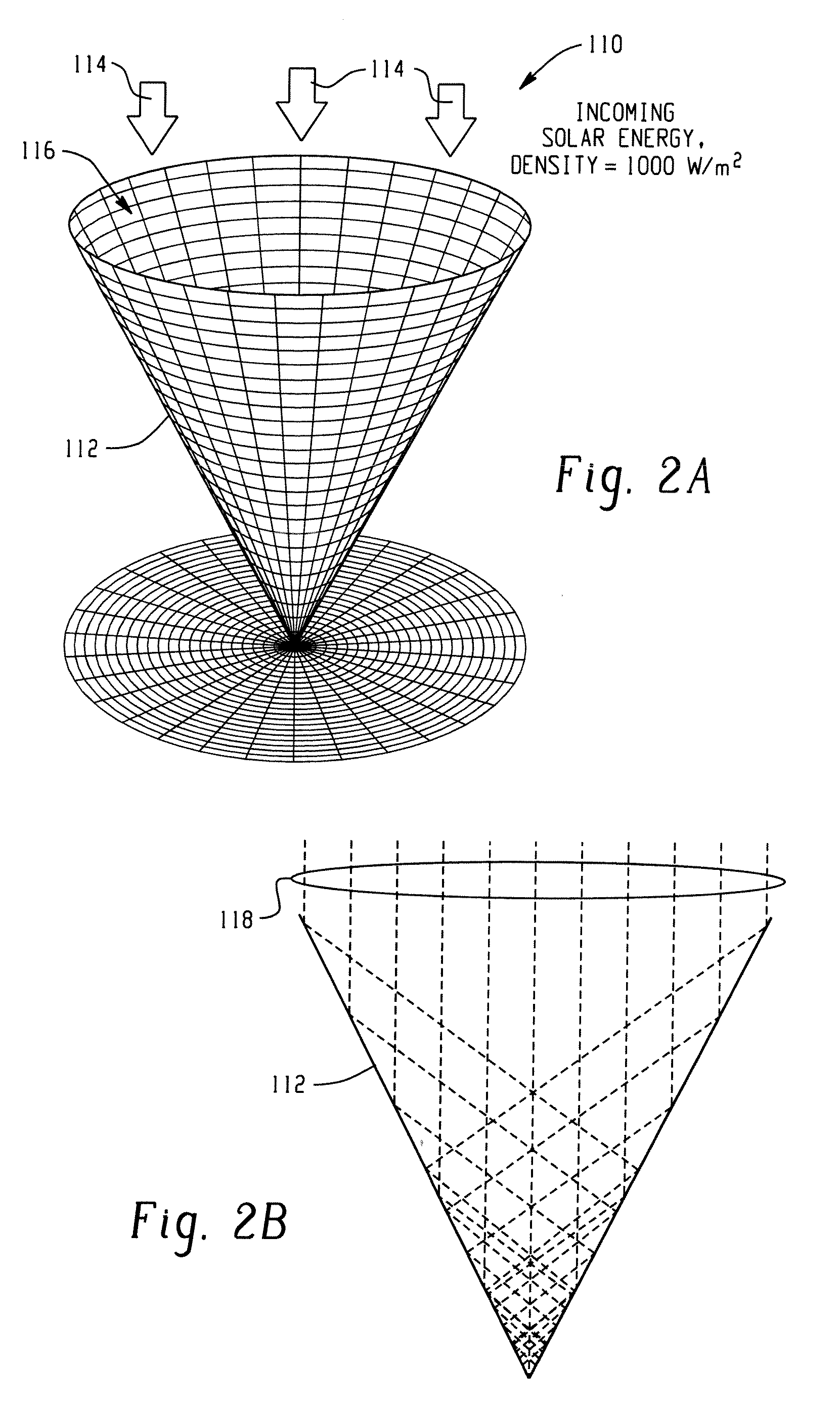Laser generated synthetic mega scale aperture for solar energy concentration and harnessing
a solar energy concentration and synthetic mega scale technology, applied in the field of solar energy collection methods and equipment, can solve the problems of low energy density to be efficiently collected, low conversion efficiency, and current methods for harnessing solar energy are in general 3-4 times more expensive than conventional methods for harnessing energy from fossil fuel energy sources. achieve the effect of reducing the laser power level
- Summary
- Abstract
- Description
- Claims
- Application Information
AI Technical Summary
Benefits of technology
Problems solved by technology
Method used
Image
Examples
Embodiment Construction
[0028]Referring now to the drawings wherein the showings are for purposes of illustrating the exemplary embodiments only and not for purposes of limiting the claimed subject matter, FIG. 1 provides an overview 100 of a typical light behavior between two media, which feature is exploited by the presently described embodiments. As shown generally, FIG. 1 illustrates a ray of incoming, or incident, light that travels through a first medium (e.g., atmosphere or air) having a first index of refraction ni, and strikes a surface of a second medium (shaded; e.g., plasma boundary) having a second index of refraction nr, at an incident angle. If the incident angle is greater than a critical angle, relative to normal (e.g., a line intersecting the surface at 90°), then the incident light ray will be reflected off of the surface. If the incident angle is less than the critical angle, then the light will be refracted through the second medium. When the incident angle is equal to the critical ang...
PUM
 Login to View More
Login to View More Abstract
Description
Claims
Application Information
 Login to View More
Login to View More - R&D
- Intellectual Property
- Life Sciences
- Materials
- Tech Scout
- Unparalleled Data Quality
- Higher Quality Content
- 60% Fewer Hallucinations
Browse by: Latest US Patents, China's latest patents, Technical Efficacy Thesaurus, Application Domain, Technology Topic, Popular Technical Reports.
© 2025 PatSnap. All rights reserved.Legal|Privacy policy|Modern Slavery Act Transparency Statement|Sitemap|About US| Contact US: help@patsnap.com



